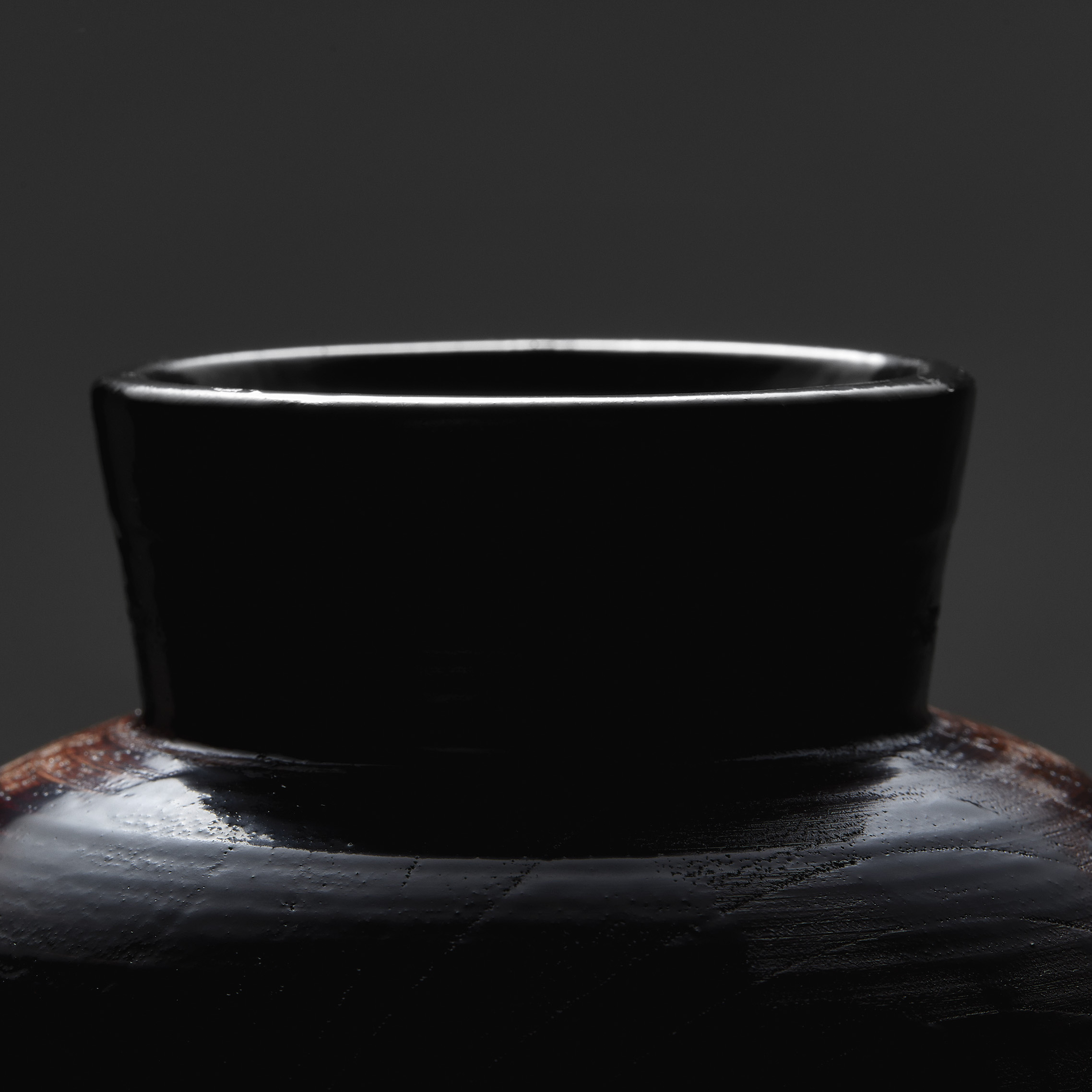
Yui KADO, Isaburo KADO
LACQUER WORKS
角有伊 角偉三郎 | ぬりもの
3 - 20 December 2021
Yui KADO will join us on 4th - 6th December
VIEWING ROOM
There will be no viewing room open to the public for this exhibition.
2021年の展示会は、角有伊、角偉三郎による「ぬりもの」で締めくくります。
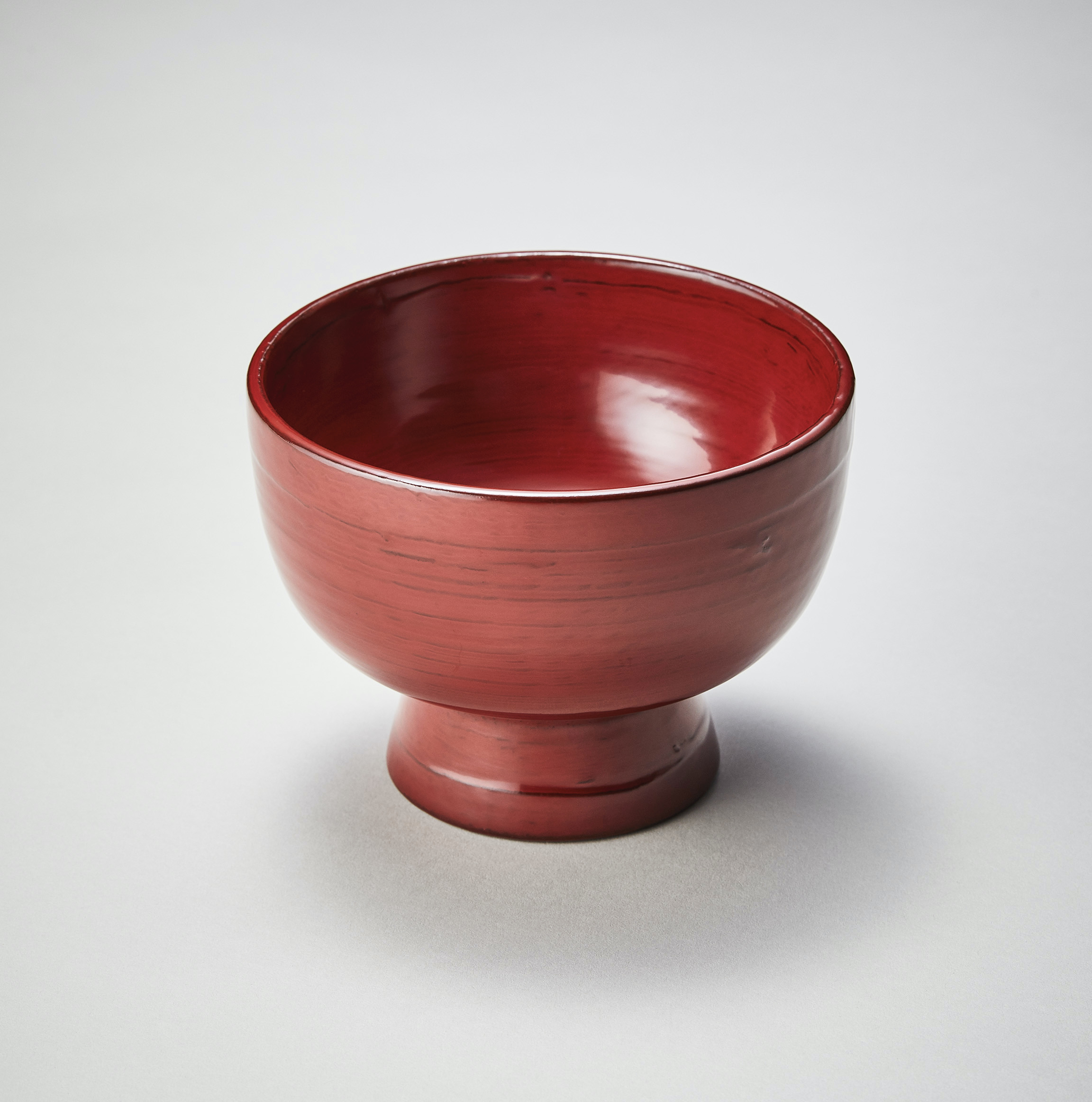
美術家、角偉三郎の感性が漆器に出会わなければ、現代の塗り物は退屈な遺産のひとつになっていたかもしれません。1980年代、木地を剥き出しにして見せたり、下地の布目が凸凹している中塗りの状態を完成とした「塗らない塗り物」を発表したとき、生まれ故郷の輪島は彼を異端と片付け、背を向けました。けれども、偉三郎による塗り物の解体と創作は、輪島の漆職人の家に生まれた彼にとって、「なぜ漆を塗らねばならないのか」という問いから始まった、自身の内側に深く向き合うプロセスからごく自然に生まれたものでした。
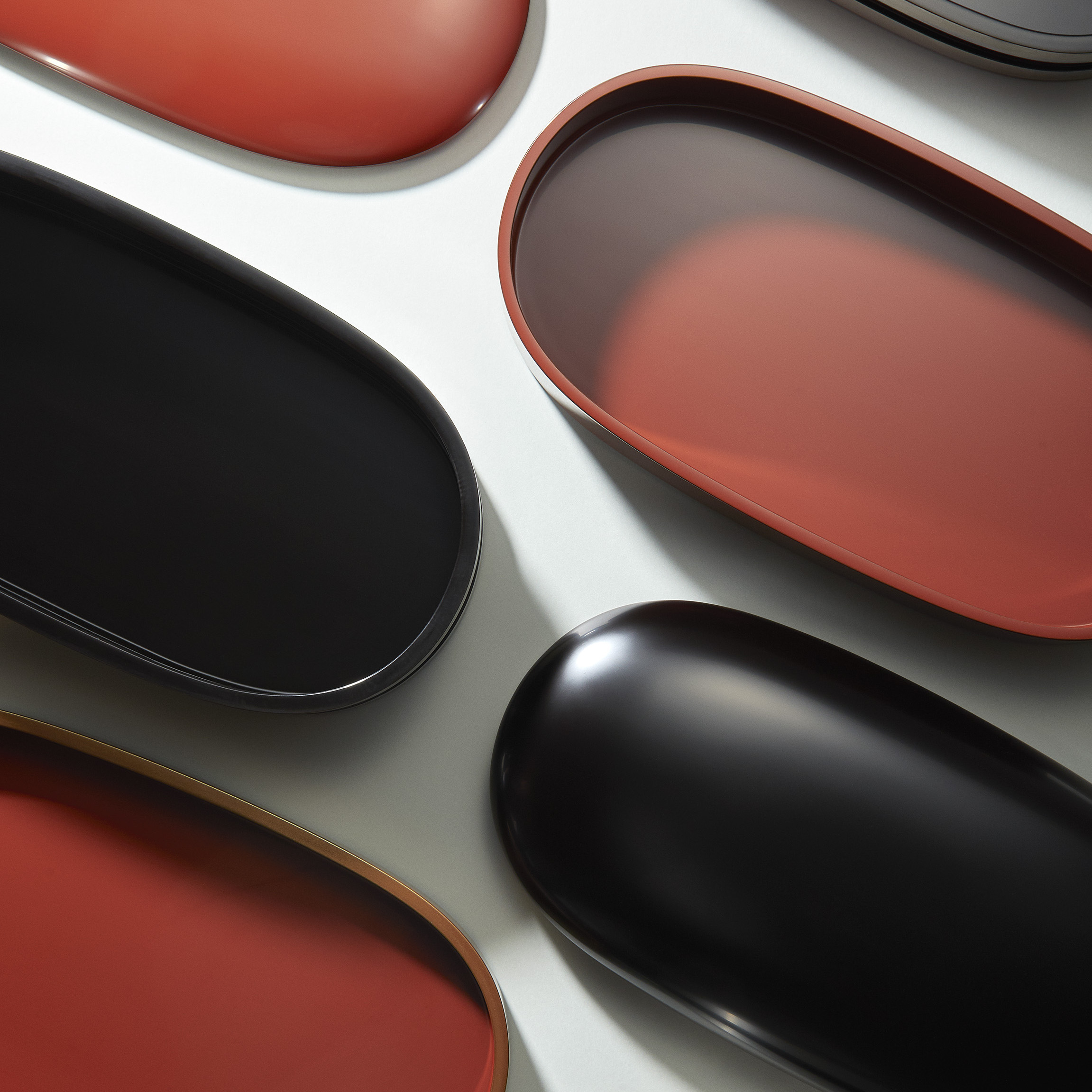
「漆芸」で人気を博した美術家としての成功を断ち、自らを職人として「塗り物」を作り始めた偉三郎は、ハレの日にしか使われない雅な漆器のイメージを根本から覆し、「木と漆」だからこそ生み出すことができる造形を次々と発表し続けました。それらはすべて、お椀、お盆、お重や酒器など、主に日用使いとして毎日の生活のなかで使われる道具でしたが、創作の種類を数えることが難しいほど、多彩な造形に広がりました。板を曲げることで生まれる図面では表現できないやわらかな曲線、へぎ板を継いで盤にしたり、わざと手痕を遺したような乱暴な塗り方も、常に孤りの心に身を置いた偉三郎の好んだ手法でした。
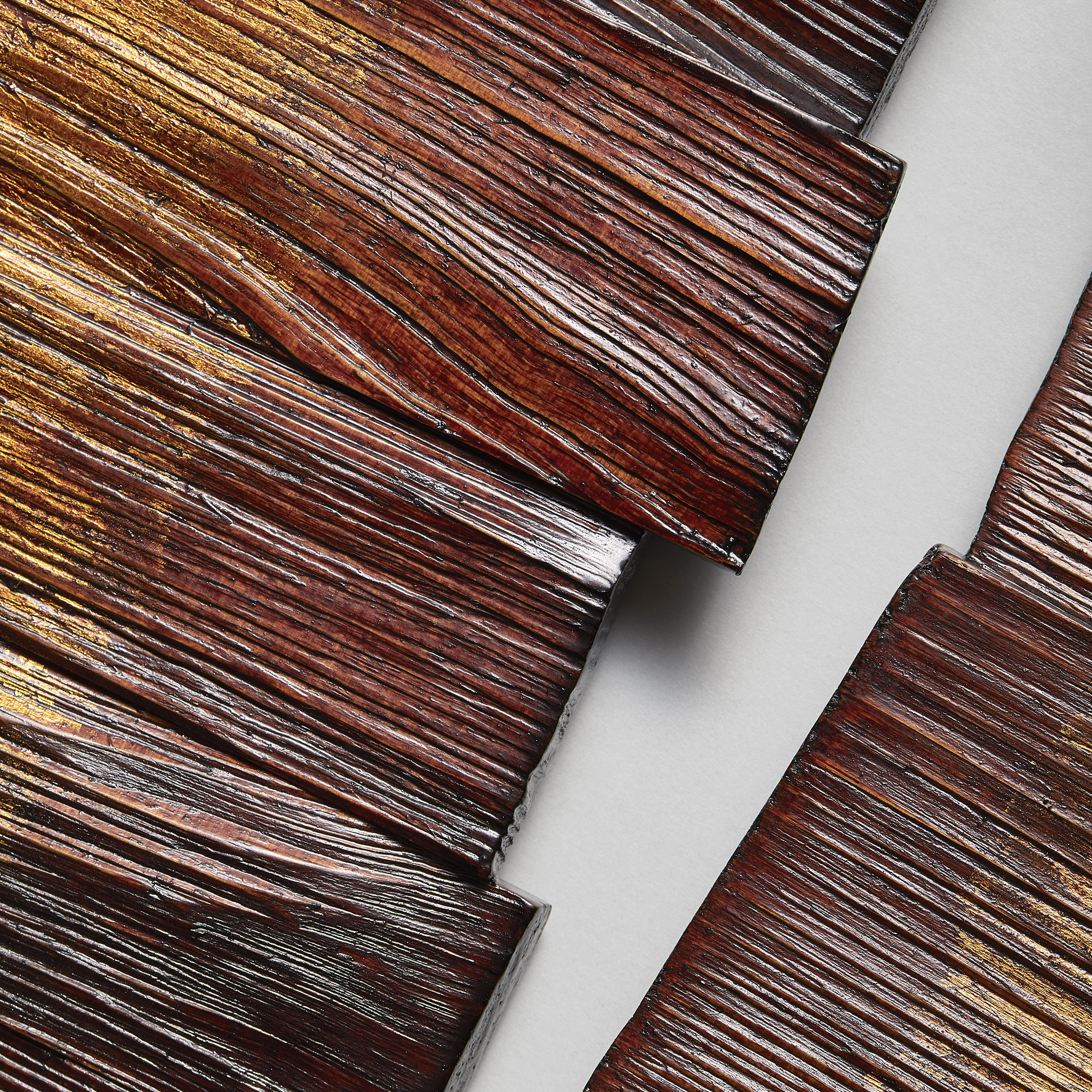
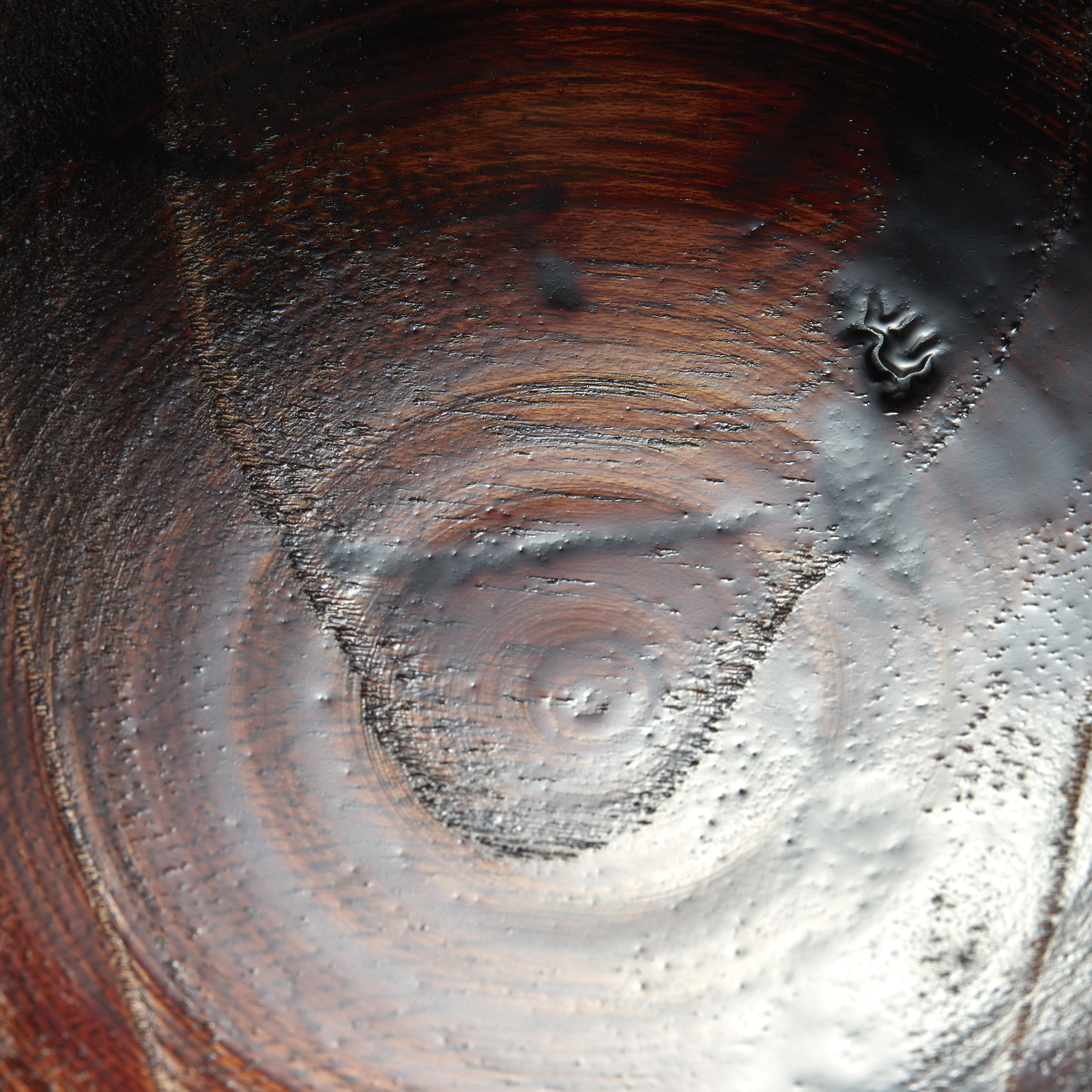
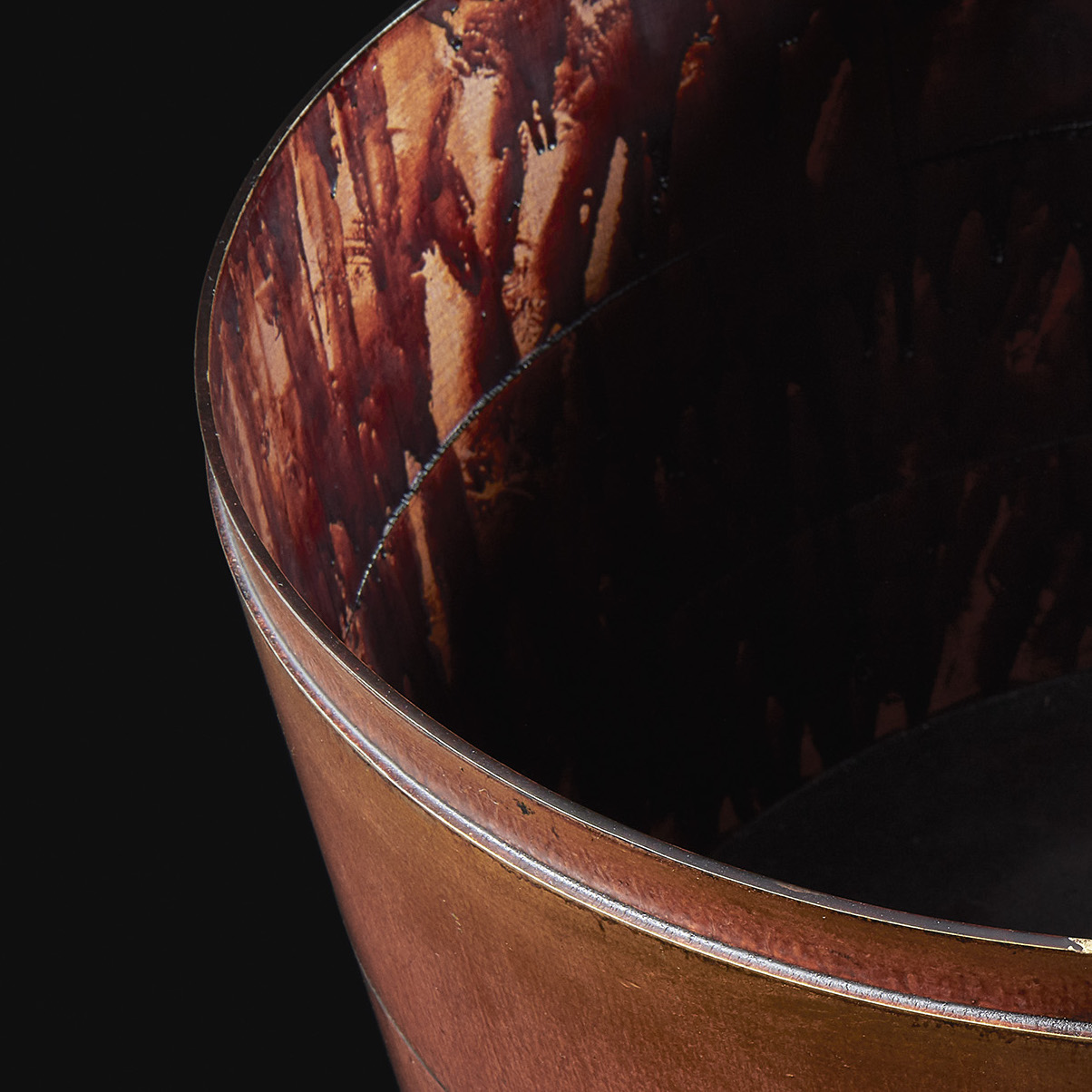
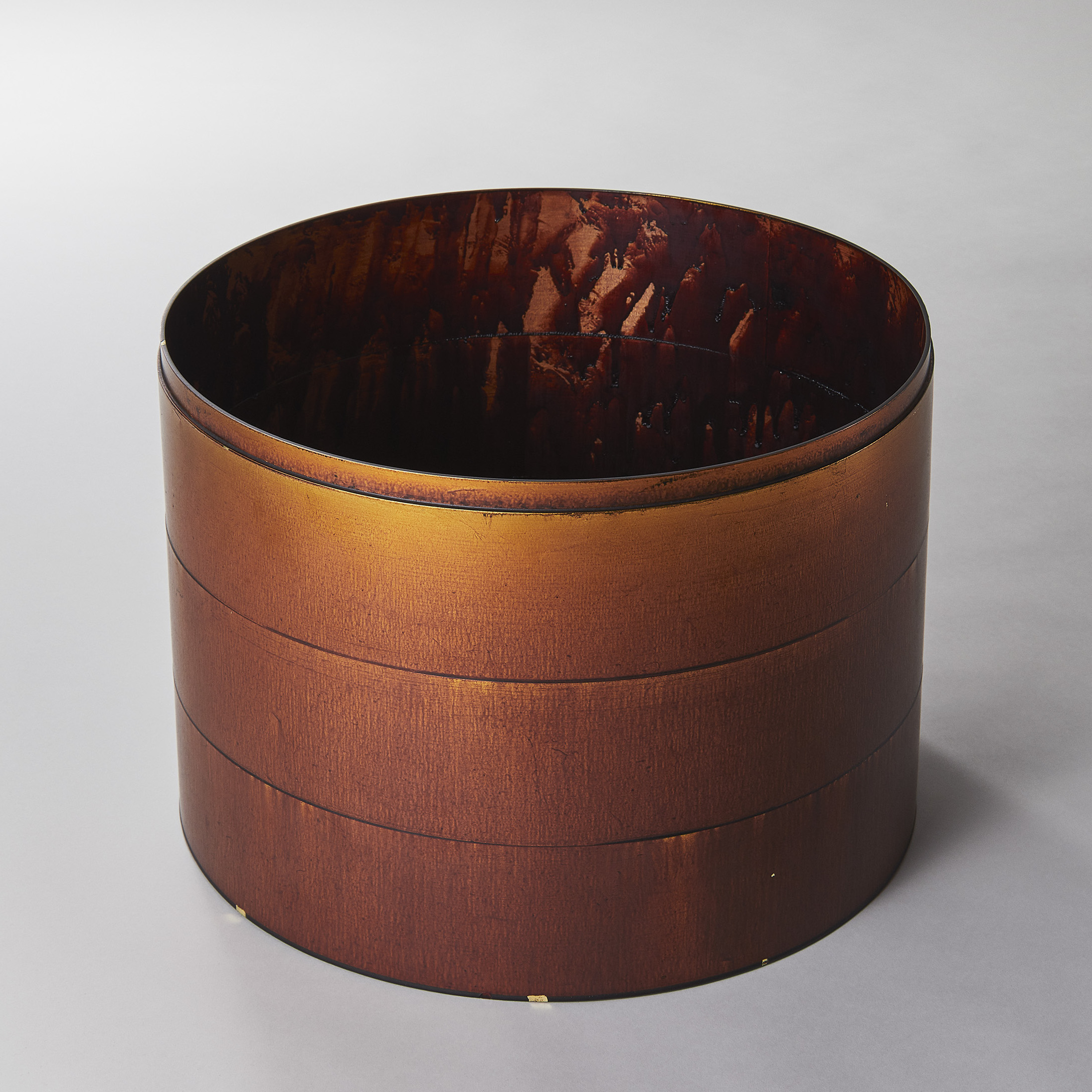
偉三郎は道具は使われてこそ完成することを信条に、「作品」と呼ぶことを拒否しつづけました。だとすれば、ひとつひとつの存在感を前にしたときの心地をどう言いましょうか。小さな盃から重厚なお重、三方のような非日常との境界線にある道具に至るまで、見る人使う人を魅了せずにはいられない完成度の高さと包容力。まるで花や海や山が私たちに教えてくれるような感じる心。通じ合う気持ち、その物語。
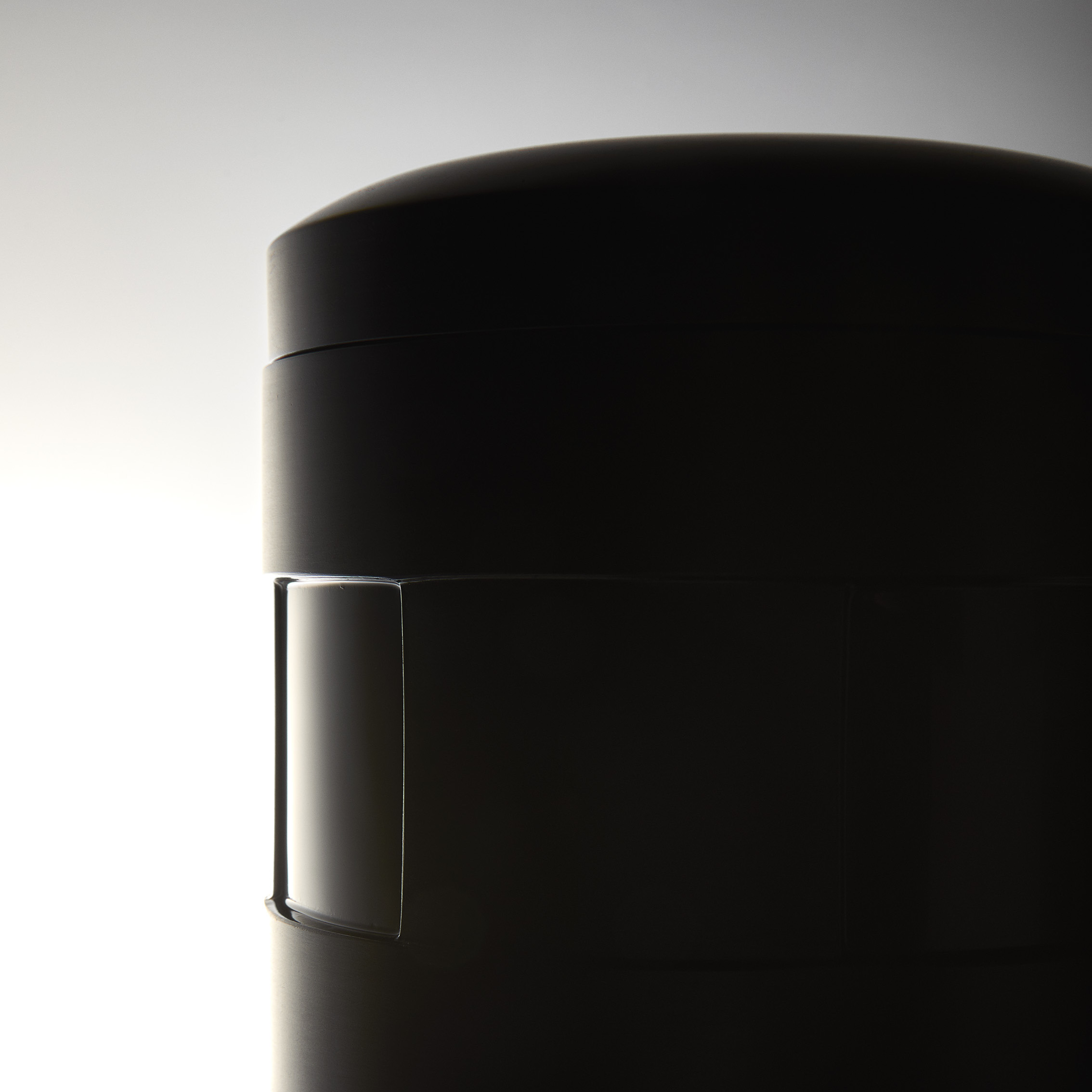
偉三郎のものづくりの姿勢は、息子の角有伊さんがはっきりと受け継いでいます。形や技術の継承は、過去の作品を上からなぞることでは成立しない厳しい道のりに違いありませんが、父が掘った深い創作の泉から、今なお清らかに水が流れ続けているのは、他ならぬ有伊さんが、穏やかに、ぶれずに、自身も創作の泉を掘する卓越した作り手であることの証明でもあります。漆の巨人が遺した圧倒的な造形へのエネルギーと、その継承者との言葉なき対話は、今も続いています。展示会では、角有伊が継承したお椀やお盆、お重や朱器などをたっぷりとご用意するとともに、偉三郎の遺作を展示販売いたします。
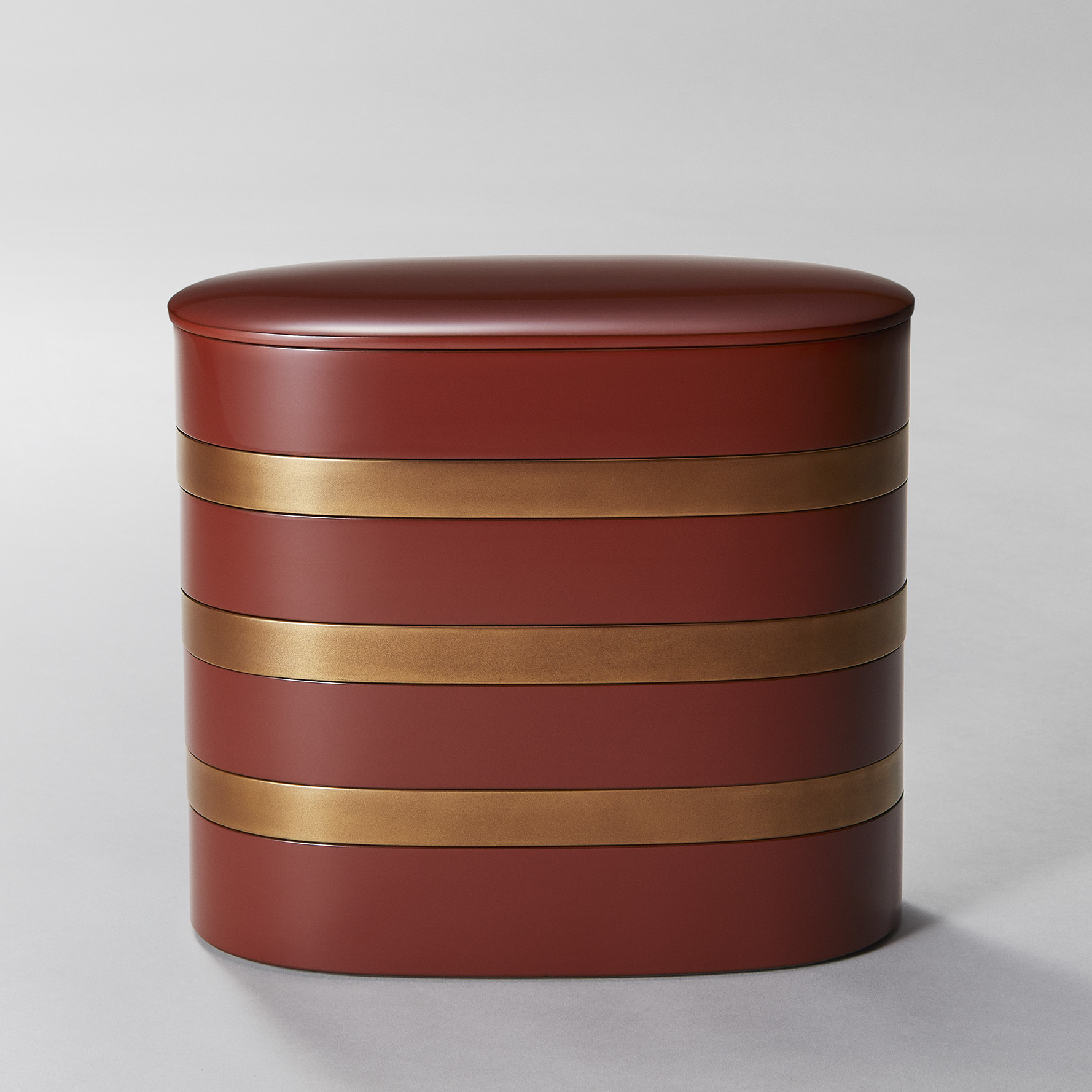
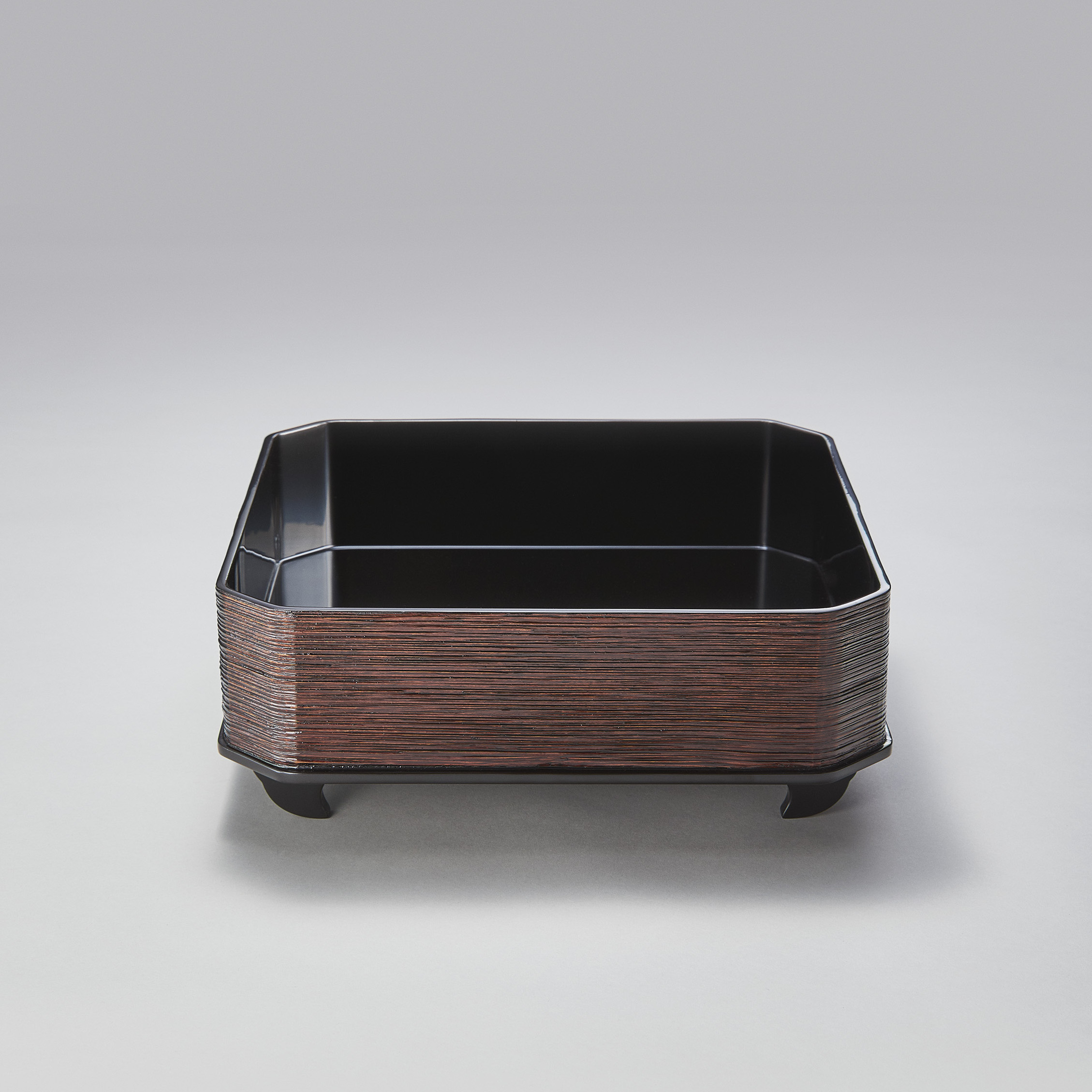
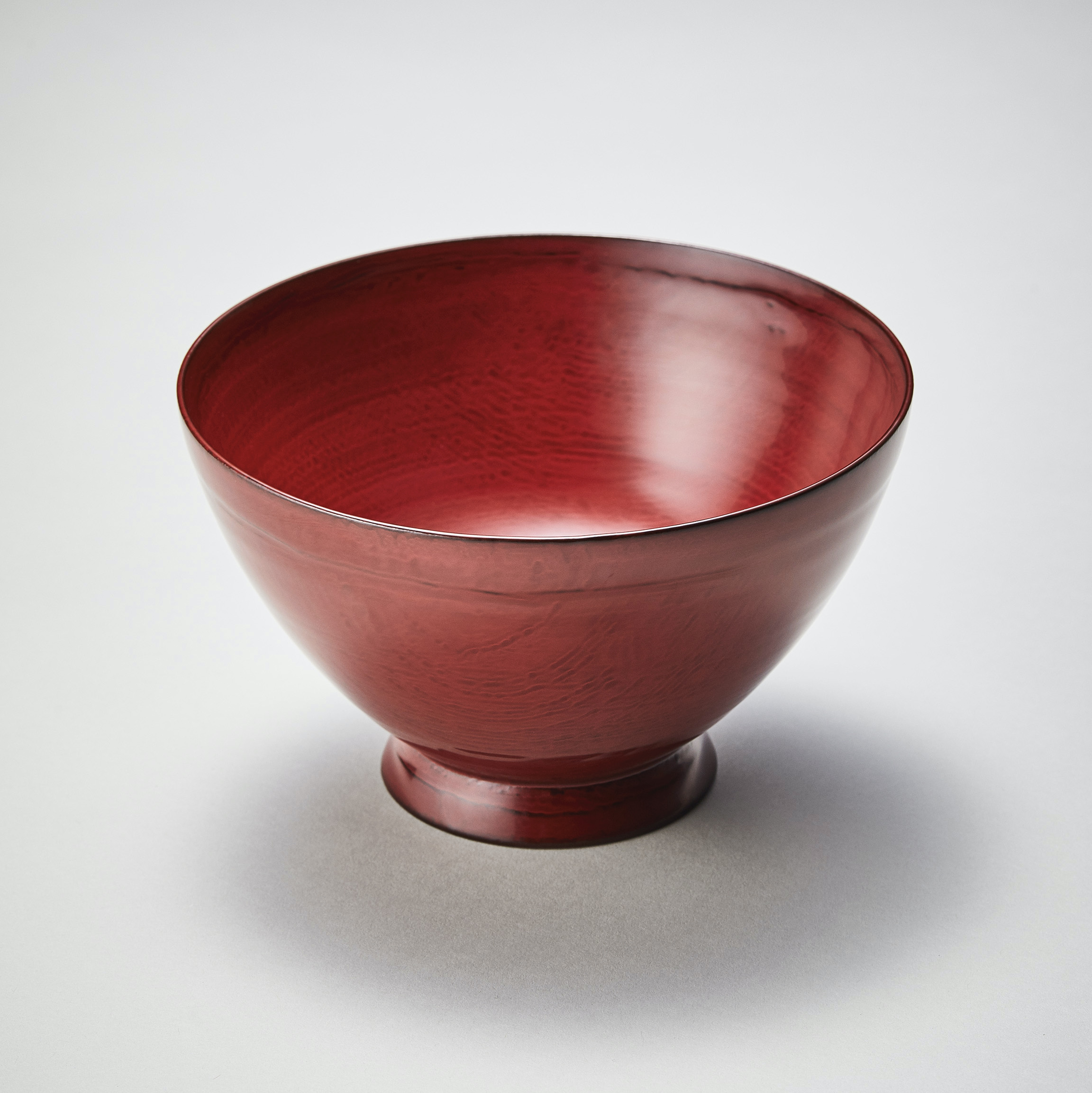
Yui KADO | 角有伊
Born in Wajima City in 1968. After graduating from high school, he studied pottery under Suda Jingua IV and went through an apprenticeship to explore the fundamentals of pottery. 2003, he started working with his father, Isaburo, in the Kado Urushi Studio. He was one of the key persons in establishing the Kado Isaburo Museum in Kaga. After the death of his father in 2005, he became the conductor of Kado Urushi Studio. Since then, he has been holding many solo exhibitions in various places every year, carrying on the legacy of Isaburo’s work and exploring his own path in lacquer art.
Isaburô KADO | 角偉三郎
Kado Isaburo was born in 1940 in Wajima (Ishikawa Prefecture), in the heart of the Japanese lacquer tradition. After finishing middle school at the age of 15, he began an apprenticeship with the chinkin-master Hashimoto Tetsushirô. After completing the apprenticeship, Kado began using the chinkin technique to create lacquer panels (the technique involves scratching thin lines into lacquer surfaces which are later filled with gold). He was strongly influenced by contemporary American painters, whose works he saw in exhibitions in Tokyo and he took part in a movement in modern lacquer art which is not interested in functional objects, but rather in creating images and sculptures out of lacquer. He has received numerous prizes and awards, including the right to take part in the Nitten exhibition every year without prior evaluation by the judges.
In the beginning of the 1970s, inspired by the discovery of old forgotten serving bowls in a temple, Kado became increasingly fascinated by bowls as subjects for the lacquer art. In 1982 he dropped out of a group dedicated to modern art craftwork and put together his first exhibition with bowls. Since the mid 1980s he has journeyed to Thailand, Myanmar, China, Bhutan, Nepal and other Asian nations in order to study their local handcraft traditions.
Despite his wide-ranging interests, Kado is deeply immersed in the local craft traditions of Wajima. He uses these traditions and creates well-chosen modern forms that incorporate a good deal of freedom and playfulness. Kado works together with a range of craftsmen in Wajima. He draws on their experience and knowledge and, in return, is a force for the development of new techniques. His unquenchable thirst to create shows itself in the wide range of his works. It includes everything from everyday, household objects to the finest pieces for special occasions, to pure art objects and pieces for installations. Kado passed away in October 2005.
Selected Collections
Japanese Department of Foreign Affairs, Tôkyô
Victoria and Albert Museum, London
Musée National des Arts asiatiques – Guimet, Paris
Lacquer Museum of Wajima, Wajima
Yale University Art Gallery, New Haven
The National Museum of Modern Art, Tôkyô
Museum für Ostasiatische Kunst, Berlin
Museum für Kunsthandwerk, Frankfurt am Main
Museum für Lackkunst, Münster
Die Neue Sammlung – Staatliches Museum für angewandte Kunst, München
>角偉三郎パブリックコレクション・前回の展示会についてはこちら